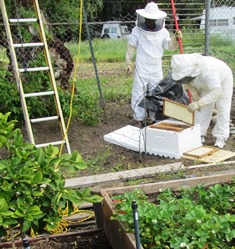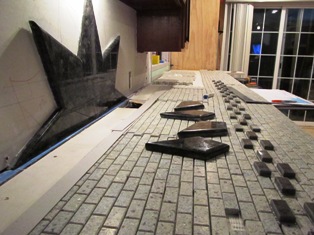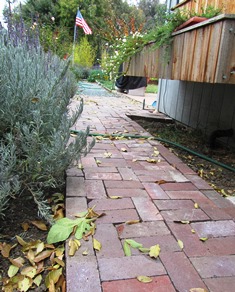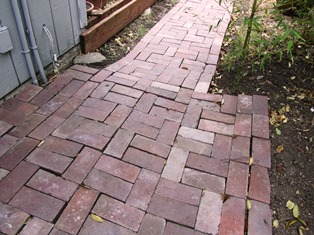How My Real Life Informs My Art
Every story needs a setting, a world in which something happens. For my cozy mysteries, I didn’t set out to create a new world for my coterie of characters, I just appropriated details of the life I am living as a farmette dweller.
Daily chores on our Henny Penny Farmette provide plenty of fodder for my fictional stories. Our daily activities include chicken care, garden and orchard work, beekeeping, cooking and preservation of vegetables and fruits, renovating the antiquated farm house, fixing sheds, and building fences and retaining walls.
Stories need a sense of verisimilitude for readers to suspend disbelief and join the fictional journey. Drawing upon my real-life experiences, I can easily integrate my adventures in my books. And not only my activities, but also experiences of my architect husband who is ever-occupied with making our old house more liveable.
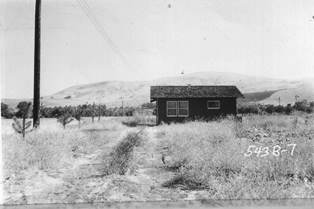
In this 1953 photo, our little house sat in a great, big field with not much around it; the dwelling faced Mount Diablo (still does) and the Delta and great central valley lie to the northeast
The tax assessor told me that our dwelling might have been a mining shack in the late 1940s (we live near Mt. Diablo and Lime Ridge where mining and rock quarrying were once important industries). We’ve also been told that our little house might have later served as a farm home (we live less than two miles from designated agricultural farmland). The structure desperately needed updating when we found it almost five years ago. But as settings go, the house and farmette work great.
We have since used recycled and reclaimed materials, sale items at big box DIY stores, and gifts (like lumber, stone, and windows/doors) from friends who do demolition on estates. We’ve visited companies that sell granite and asked for permission to take broken stone from their dumpsters. Thus, we’ve created a lovely bathroom floor with found materials that we’ve cut and sanded.

Light from a crystal chandelier dances off the new granite counter, but the floors were not yet installed when this photo was taken
Of course, the exact details of our daily activities may not make their way into my stories, but versions of them sometimes do. At the very least, such activities inform my storytelling. I daresay the chickens and bees serve important roles in my mysteries. And each new day brings new adventures, from foxes showing up to skunks and raccoons raiding our fruit and nut trees.
Lately, a new chicken showed up on our property (a heritage chicken that had the ability to fly over my neighbor’s fence). She’s been staying here ever since. Wild turkeys often take a path through the property and once or twice a gorgeous stallion named Romeo and its owner ride by and say hello. Such events can add textural details to the setting of a story.
Less Mopping, More Writing
It may not be immediately apparent what recycled bricks have to do with writing, but bear with me. A friend who does professional demolition of houses and properties brought us a truckload of bricks from an owner who was re-landscaping his upscale property in a nearby East Bay city. Otherwise, those bricks were destined to be discarded in a landfill.
Temperatures hovered near 70 degrees Fahrenheit this past weekend (Thanksgiving) and the weather was perfect for us to lay a brick walkway. My architect husband and I are passionate about recycling materials that still have life in them. It’s one of the reasons why two of our favorite places to visit are architectural salvage yards in Berkeley: Ohmega and Urban Ore. See http://www.ohmegasalvage.com/ and also see http://UrbanOre.com/
With the rainy season on its way, it seemed like a good idea to lay the brick in a pattern along the northwestern side of the house where we keep the recycle and garbage bins. During winter, we track a lot of mud into our small farmette home because we have only dirt and gravel paths through the garden and orchard areas.
This year, it will be different. The newly laid brick walkway runs from the front to the rear of the house, joining the front porch (that we are currently building) with a gravel path leading to the property line. We laid out the brick pattern and tapped them close together, using a rubber mallet (since hitting brick on brick can cause breakage).
We still need to pour sand on top and sweep it into the cracks. But this kind of path can last for years. The ancient Romans built similar paths that remain to this day. The rains will come, but less mud will be tracked in because of the paving stones. That means for me fewer hours this winter spent mopping the mud tracked in and more time writing on my cozy mystery series.
 Facebook
Facebook Goodreads
Goodreads LinkedIn
LinkedIn Meera Lester
Meera Lester Twitter
Twitter



